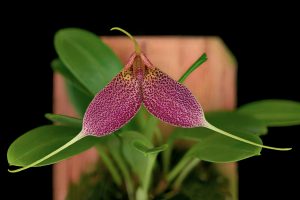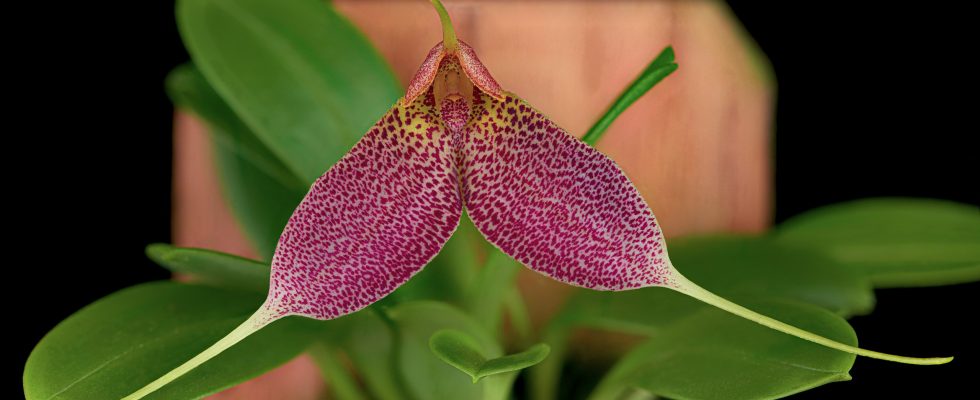Masdevallia is a huge genera which contains many species with a wide diversity of flowers. They are all native to the Americas, the majority found at high altitudes in the coastal range of mountains in Brazil or in the Andes, and as far north as the rainforests of Mexico.
They are generally small, tufted plants without pseudobulbs and each season’s growth consists of a single leaf. Many growths are produced at a time and the result is a large tuft of pale or dark green leaves. Without a pseudobulb to sustain the plant during periods of drought, the leaves have become very thick and can store moisture in great quantities. This conserves the orchid for short periods without rain. In nature, these plants are often found on moss-covered tree branches, where their fine root system can grip and find enough moisture and nourishment to sustain the plant. They will be equally at home on mossy rocks or on the ground where the drainage suits them and the competition from other plants is not too great.

The flowers are borne on a single stem and can be solitary or numerous. The sepals are the largest and most dominant part of the bloom, with the petals and labellum so diminutive that they are hardly noticeable. The edges of the sepals are often fused, giving the appearance of a triangular or kite-shaped flower. The colours are highly variable, from pure whites, yellows and browns, spotted and patterned, to brilliant oranges, purples and mauves.
There are many hundreds of species, most requiring no more than a small flower pot the size of a coffee cup; a great many plants can be accommodated in a small greenhouse. As they are high-altitude plants, they enjoy cool, moist conditions all year. It is as important to ensure that they do not overheat on a hot summer’s day as to make sure that they don’t get too cold on a severe winter’s night. In the wild, they are not subjected to long droughts so do not need resting periods.
Considerable hybridizing has been done within this group and there is plenty of scope for more. With many species to choose from, combined with their readiness to breed, the chances for hybridizing are great. Once the seedlings are established, they grow quickly and will bloom in a short time from sowing.
A large group of other genera are related to the masdevallias, including the draculas whose flowers are huge compared to the plant. Large, triangular blooms with long, thin, pointed tips are produced in sequence from the same stem, and although short-lived, they have a curious attraction with their lip structure.
Dryadella, a genus of small, compact orchids, is also closely related and has stemless flowers nestling around the base of the plant, giving it the common name of pheasant in the grass.

An even larger group than Masdevallia is Pleurothallis. Most of these plants have very small, insignificant blooms but are still worth growing by the amateur who likes to possess something different. These genera grow well together in a cool, well-shaded greenhouse.

